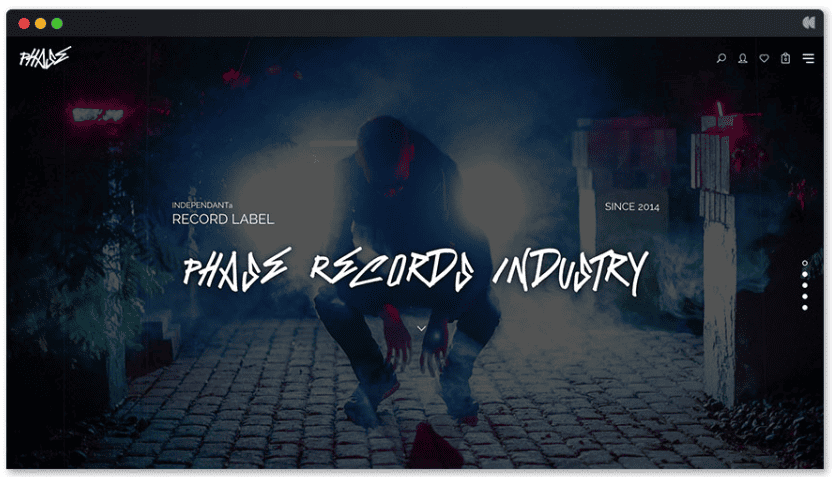How to Get Better Results Mixing in Your Home Studio

Creating professional-sounding mixes at home is one of the biggest challenges for modern musicians and producers. While technology has opened doors for anyone to record and mix music, the results don’t always match what you hear from professional studios. Many home producers often feel stuck, wondering why their mixes sound flat, muddy, or lifeless compared to commercial tracks.
One overlooked factor is presentation—how your music environment reflects professionalism. Surprisingly, even something as simple as your website design can influence how listeners, clients, and collaborators perceive your work. Using tools like a Recording and Sound Studio WordPress Theme not only makes your studio look more credible online but also sets the stage for creative confidence in your workflow.
But design is only the surface. Let’s dive deeper into why your mixes might not sound right and explore practical ways to level up your home mixing results.
Why Your Mixes May Sound Unbalanced
Most beginners assume mixing is purely about turning knobs or applying presets. In reality, it’s much more about how sound interacts with your environment. A few common reasons mixes sound unbalanced include:
-
Poor room acoustics – Small or untreated rooms exaggerate certain frequencies. This tricks your ears into believing the mix is balanced when it isn’t.
-
Over-reliance on headphones – While great for details, headphones don’t provide the full stereo image and depth that speakers reveal.
-
Mixing without reference tracks – Without comparing your work to polished songs, you lose perspective on loudness, clarity, and balance.
-
Too many effects – Adding heavy reverb, delay, or compression can quickly muddy your mix, masking the natural clarity of the track.
These issues build frustration over time, leaving you with mixes that fall short on streaming platforms or client projects.
The Struggle of Mixing in a Limited Space
Home studios often lack the controlled environment of professional setups. That doesn’t just affect the sound—it also impacts creativity. When you’re second-guessing every move because of poor monitoring, your confidence drops. You might spend hours tweaking small details, only to realize the mix doesn’t translate on other systems like car speakers or earbuds.
Even worse, this frustration can slow down your workflow, making you less likely to finish songs. Inconsistent results sap motivation, and the dream of creating professional-quality mixes begins to feel out of reach.
Steps to Improve Your Home Mixing Results
The good news? You don’t need an expensive commercial studio to achieve polished mixes. With the right habits and tools, you can elevate your sound dramatically.
1. Treat Your Room Before Upgrading Gear
Expensive monitors won’t fix poor acoustics. Start with acoustic treatment—bass traps, absorption panels, or even budget-friendly DIY solutions. A balanced room helps you hear mixes accurately, which is more valuable than fancy gear.
2. Use Reference Tracks as Guides
Always keep a few professionally mixed songs in your genre nearby. Drop them into your project and A/B test your mix against them. This helps you understand how loudness, EQ, and dynamics should feel.
3. Simplify Your Mixing Chain
Instead of stacking endless plugins, focus on essentials: EQ for clarity, compression for balance, and reverb for space. Overprocessing often makes mixes worse. Minimal, intentional adjustments work best.
4. Calibrate Your Listening Levels
Mixing at high volumes is tempting, but it’s misleading. Aim for moderate levels around 70–80 dB. Quieter mixing sessions force your ears to notice balance issues more clearly.
5. Take Breaks to Reset Your Ears
Our ears fatigue quickly. After 30–40 minutes of mixing, take a short break. Fresh perspective prevents over-editing and helps you make better decisions.
6. Invest in Quality Monitoring Tools
If your budget allows, consider a reliable pair of nearfield monitors or open-back headphones designed for mixing. Combined with room treatment, they’ll give you a clearer picture of your sound.
Balancing Creativity and Technical Precision
Mixing isn’t just technical—it’s an art form. While science helps you understand frequencies, dynamics, and stereo space, creativity ensures your mix has emotion and personality. Striking this balance means knowing when to follow rules and when to break them. For instance, you might boost unconventional frequencies to emphasize a unique sound, even if it’s not textbook correct.
A mix that’s technically flawless but emotionally flat won’t connect with listeners. Likewise, a mix that’s expressive but muddy won’t sound professional. The key is learning when to trust your ears and when to rely on proven mixing practices.
Why Professional Presentation Still Matters
Even with improved mixes, your music journey doesn’t end inside your DAW. Listeners, potential clients, and collaborators often judge your professionalism based on how you present yourself online. If your studio, brand, or portfolio looks outdated, people may overlook your work, no matter how great your mixes sound.
That’s where creative tools like a professional website design can support your growth. A polished online presence signals credibility, builds trust, and attracts the right opportunities.
Final Thoughts
Getting better mixing results in your home studio requires a mix of science, creativity, and discipline. Treat your space, trust reference tracks, and keep your workflow simple. Most importantly, don’t let frustration stall your progress—small, consistent improvements stack up over time.
And remember, presenting your work professionally matters just as much as producing it. While the mix determines how your music is heard, your online presence determines who gets to hear it. By improving both, you’ll put yourself in the best position to grow as a home producer and share music that truly resonates.
- Art
- Causes
- Crafts
- Dance
- Drinks
- Film
- Fitness
- Food
- Παιχνίδια
- Gardening
- Health
- Κεντρική Σελίδα
- Literature
- Music
- Networking
- άλλο
- Party
- Religion
- Shopping
- Sports
- Theater
- Wellness



